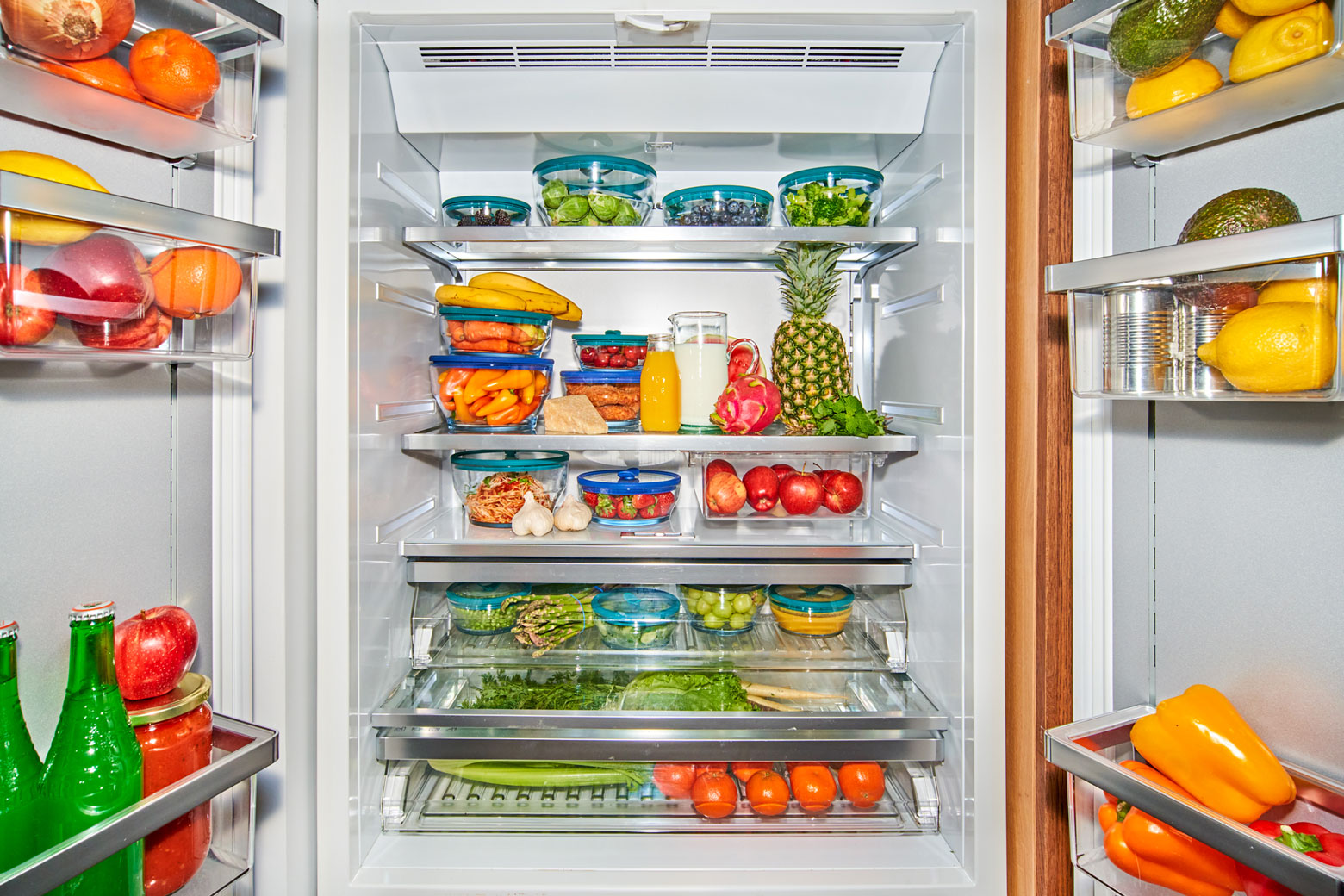Understanding how your microwave works is essential for making sure that all your recipes turn out as expected. Like any appliance in your kitchen, you need to understand how your microwave operates, and that includes knowing its strengths and weaknesses. That’s why we’ve developed this guide to calibrate your microwave.
Have you ever tried the toast test to see where your oven’s hot spots might be? You might discover that there are parts of your oven get hotter than others, and adjust your bakes accordingly. These calibration tests below follow the same concept, but for your microwave. Once you determine the most accurate time it takes for your microwave to boil water and make rice, you’ll be able to make microwave recipes with better accuracy and tastier results!
Why is this important? All of our custom-coded microwave recipes assume a certain level of power output, but not all microwaves actually operate at the same wattage. This means that even if you have a 1000w microwave, not all 1000w models might function in the same way. This guide will help determine your microwave's true wattage performance through easy-to-follow tests using common kitchen ingredients like water and rice. The results will help you understand how quickly your microwave reaches boiling points and handles more complex tasks like cooking hearty grains, steaming vegetables, and more complete microwave meals.
Even if you think you know your microwave well, you can still run one of these tests to validate the results. Selecting the most suitable wattage helps achieve the best result in every microwave recipe you make.
Things to know before you start
There are two key things you should understand about your microwave before you start the calibration test: your microwave’s wattage (as determined by its manufacturer) and how to change the power levels.
- Look up your microwave’s wattage. Microwave wattages typically range from 700 to 1200 watts To find your microwave's wattage, take a look at the front panel, the side of the door, in the back, or in the user manual. Need more help? Learn more on our blog.
- Know how to change its power levels. Look up your microwave’s manufacturer’s instructions, or read more on our blog.
You might be thinking: Why do I need to find my microwave’s wattage? Isn’t that what this test is for? Yes, this test will help you determine at what output your microwave actually works, but it’s always a good idea to understand its baseline. For example, you have a 1000w microwave, but after these tests, you figure out it might be working more like a 1200w. No wonder your food is coming out too hot! The calibration tests are meant to help you pinpoint how your microwave is actually operating versus how its supposed to.
If you truly can’t find the wattage on your appliance, fear not! That’s what these tests are going to help you figure out. Let’s get started:
Test 1: The Water Test
To gain a better understanding of how your microwave works, try this water boiling test! It’s a 5-minute commitment that will help you understand the way your microwave cooks certain recipes. All you have to do is fill a microwave-safe dish (i.e. an uncovered Anyday dish) with water and press start.
There’s a few things to keep in mind:
What is 'full boil' and why is it essential?
Just like the stovetop, a 'full boil' refers to the state where a liquid (water) reaches its boiling point (212°F). Look for large, consistent bubbles both at the base of the dish and on the surface. Achieving a full boil is vital for accurately determining your microwave's wattage and making sure that recipes cook correctly.
Here’s what a full boil looks like:
Use caution when conducting the water test
When working with boiling water, it’s important to use extra caution. You should definitely leave the dish in the microwave for a few minutes to allow the water to settle down from a full boil. Anyhand Mitts are perfect for handling hot dishes, plus you can also use them as trivets. Be sure not to place hot dishes on cold surfaces! This rapid change in temperature change could cause your dish to crack unexpectedly.
Does this testing work if I live in a higher altitude?
If you live in a place of higher elevation, you probably know this issue all too well. A general rule of thumb is for each additional 1,000 feet elevation, add a minute of cooking time. This is why the water test is so essential! Calibration will show you how well your microwave actually performs, not necessarily what the numbers and letters on the inside of the door says.
How to conduct the water test to calibrate your microwave
To figure out how effective your microwave is at cooking food, you must first determine how long it takes for your microwave to boil water. Conduct this simple test to figure out your microwave’s baseline:
Active Time: 1 minute
Total Time: 4 minutes
| Ingredient | Dish | Cook Time |
|---|---|---|
| 1 cup cold water | Small Dish | 4 minutes |
| 1 cup cold water | Medium Deep | 4 minutes |
| 1 cup cold water | Medium Shallow | 4 minutes |
| 1 cup cold water | Large Deep | 4 minutes |
| 1 cup cold water | Large Shallow | 4 minutes |
| 1 cup cold water | Extra Large Dish | 4 minutes |
How to conduct the water test:
- Measure one cup of ice-cold water. If the water isn’t cold, add ice cubes and stir until chilled. Discard ice cubes and return the water level to one cup.
- Cook in the microwave uncovered for 4 minutes.
- Stay close to the microwave, watching the water as it heats. Stop cooking as soon as the water reaches a 'full boil', likely before the 4 minutes is up.
- Note the time it takes for the water to come to a full boil.
Results
Our Test Kitchen performed this extensive test in our in a variety of microwaves with various wattages, so you can rest assured that these cook times are accurate.
| Boil Time | Wattage |
|---|---|
| 2 mins | 1000+ watts |
| 2.5 mins | 800-1000 watts |
| 3 mins | 700 watts |
| 3-4 mins | 500-600 watts |
- Boiling in 2 minutes or less suggests that your microwave performs at about 1000 watts or higher.
- Boiling in 2-3 minutes indicates that your microwave performs at about 800-1000 watts.
- Boiling in 3-4 minutes suggests that your microwave performs at about 500-700 watts.
- Boiling in more than 4 minutes that your microwave performs at about 500 watts or less.
If the water takes more than 5 minutes to boil, consider upgrading your microwave for better performance.
What's Next?
Feeling confident? Move on to the next test (the Rice Test) to apply these results. If your microwave cooks rice perfectly, you can confidently use this wattage setting for our recipes.
Do the results of this test not match up with your microwave’s manual? This could be due to a variety of things like how old your microwave is or your kitchen’s electrical setup. Consider reaching out to your microwave’s manufacturer if it’s not performing as expected.
Test 2: The Rice Test
Using the wattage determined in Test 1, try our White Rice recipe, as instructed.
Troubleshooting:
- After cooking as directed, if you notice that the rice has over 1/2” of water left, increase the power level by 1 and add 1 more minutes at a time, in increments until the rice is perfectly cooked and the water is absorbed.
- Note: This recipe requires you to lower the power level. If you need more if information on power levels, check out this blog post.
- Note: Brown rice cooks very differently from white rice.
Test 3: Try more microwave recipes
Using the wattage determined in Test #1, move on to test these standard recipes:
-
How to Microwave Broccoli
- If the broccoli appears undercooked, your wattage might be lower than expected; add more cook time as necessary.
- If the broccoli appears wrinkled and dry, your wattage may be higher than expected; add a splash of water and try again for less time.
-
How to Microwave Poached Eggs
- If the egg white is still transparent after the designated cook time, increase the power level as this means your microwave might have a lower wattage than estimated.
Gaining a better understanding about how your microwave works
Did your recipes work out as expected? This is great news! Once you gain a better understanding of your microwave’s performance, you can select the right wattage in our recipes and they will automatically generate the recommended cook times for your specific microwave. With a bit of practice and getting to know your microwave, every dish should come out as intended! Explore our recipe collections for rice and grains, veggies, meat, fish and seafood to start microwaving from scratch with confidence.
If you’re still unsure about your particular microwave, try again and revisit the Water Test, making sure the water is cold. If your microwave is still producing inconsistent results, we recommend reaching out to your microwave’s manufacturer. They know your machine best!
You’re on your way to discovering what a powerful kitchen tool the microwave can be. Once you learn how quickly, efficiently, and consistently recipes cook in the microwave, you’ll have more time to get creative in the kitchen.





Share:
How to Freeze and Reheat Food in the Microwave Using an Anyday Dish
15 Microwave Recipes for Juicy and Tender Chicken Every Time